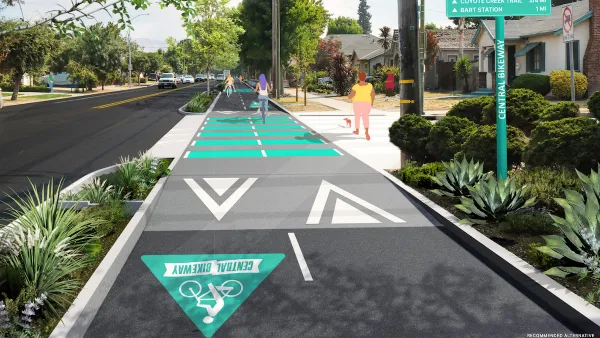Around the country, cities and states are starting to listen to decades-old demands to remove freeways that have displaced and fractured communities.

Writing in the Congress for New Urbanism’s (CNU) Public Square, Lauren Mayer reports on some of the freeways most nominated for CNU’s next biannual Freeways Without Futures report, which “highlights the efforts of local campaign organizers and activists seeking to revitalize their communities by dismantling the city highways that burden them with the significant health hazards of vehicle exhaust, a loss of local businesses and services, and streets that are hostile to pedestrians.”
So far, nominees include several major freeways in New York State, including I-81 in Syracuse, Buffalo’s Route 5 and Skyway, and the Inner Loop in Rochester. In New Orleans, a decade-long fight to remove the Claiborne Expressway is inching forward as the city’s mayor and local U.S. representative became part of a “growing consensus” that restoring Claiborne Avenue is “the right course of action for the Tremé neighborhood.”
Across the northern border, efforts to tear down Toronto’s Gardiner Expressway are bearing fruit. After one portion was removed in 1999, the city removed more ramps in 2021 as part of the Gardiner Expressway Strategic Rehabilitation Plan, which “will realign the expressway and help transform the area to improve transportation corridors and provide more efficient public transit and new public facilities.”
FULL STORY: News on the most nominated ‘Freeways Without Futures’

Planetizen Federal Action Tracker
A weekly monitor of how Trump’s orders and actions are impacting planners and planning in America.

In Praise of Analog Cities: Futureproofing in a Time of Crisis
I didn’t need a pandemic or a war to teach me that smart cities weren’t the future — but it sure drove the message home.

Silicon Valley ‘Bike Superhighway’ Awarded $14M State Grant
A Caltrans grant brings the 10-mile Central Bikeway project connecting Santa Clara and East San Jose closer to fruition.

One Fifth of California Homes Owned by Investors
The state mirrors a national trend of investors buying up housing to rent.

Oregon Governor Proposes Higher Gas Tax, Vehicle Fees to Fund ODOT
Gov. Kotel called a special legislative session in late August to address the budget gap at the state transportation department.

Analysis: Federal Budget Guts Housing Programs
Despite a small increase in the low-income housing tax incentive, deep cuts to other federal housing programs will likely exacerbate the housing crisis.
Urban Design for Planners 1: Software Tools
This six-course series explores essential urban design concepts using open source software and equips planners with the tools they need to participate fully in the urban design process.
Planning for Universal Design
Learn the tools for implementing Universal Design in planning regulations.
Heyer Gruel & Associates PA
Yukon Government
New Jersey Institute of Technology
Mpact (founded as Rail~Volution)
City of Camden Redevelopment Agency
City of Norman, Oklahoma
City of Portland
City of Laramie





























